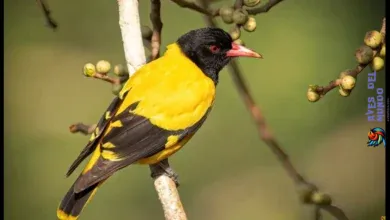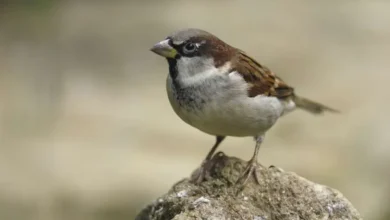Imagine seeing a bird with a huge, bright beak flying in a tropical rainforest. These birds are toucans, known for their many species and vibrant colors. Let’s explore the world of Toucans and the diversity in these lush areas.
Toucans are part of the Ramphastidae family, which has about 35 types in 5 groups. You might know the big toco toucan or the small tawny-tufted toucanet. They vary in size, shape, and color. What stays the same is their big bills, used for picking fruit and scaring off enemies.
Maybe you love the bright colors of the keel-billed toucan or are curious about the 15 species in the Ramphastos and Andigena groups. These birds add varied beauty to their rainforest homes. Let’s learn more about the amazing toucans and how they support their lush environments.
What Are Toucans?
Toucans are colorful birds known for their huge, striking bills. They live in the Neotropical areas of Mexico, Central, and South America. This family, Ramphastidae, has over 40 species in five groups: Ramphastos, Pteroglossus, Selenidera, Andigena, and Aulacorhynchus. Their bills can be bigger than their heads.
Taxonomic Classification
Toucans are in the same group as woodpeckers and barbets. The Ramphastidae family is unique in being in the Neotropical area. There are differences in size and features within the five genera of toucans.
Physical Characteristics
Toucans are known for their large, bright bills. Despite its size, the bill is light. It is made of keratin, the same as human hair and nails. Toco toucans are the biggest, at 24 inches and 1.9 pounds. The tawny-tufted toucanet is the smallest, at 12.5 inches and 3.4 ounces.
Ramphastos

Pteroglossus

Selenidera

Andigena

Aulacorhynchus

| Toucan Genus | Number of Species | Largest Species | Smallest Species |
|---|---|---|---|
| Ramphastos | 8 | Toco Toucan (24 inches, 1.9 lbs) | White-throated Toucan (16 inches, 0.7 lbs) |
| Pteroglossus | 14 | Spot-billed Toucanet (17.5 inches, 0.5 lbs) | Lettered Aracari (12.5 inches, 3.4 oz) |
| Selenidera | 6 | Golden-collared Toucanet (13.5 inches, 0.3 lbs) | Saffron Toucanet (12.5 inches, 0.2 lbs) |
| Andigena | 4 | Plate-billed Mountain-Toucan (18 inches, 0.6 lbs) | Hooded Mountain-Toucan (15 inches, 0.4 lbs) |
| Aulacorhynchus | 11 | Emerald Toucanet (13 inches, 0.3 lbs) | Choco Toucanet (12 inches, 0.2 lbs) |
Fascinating Toucan Species
Two famous toucan types are the toco toucan and the keel-billed toucan. The toco is the biggest, reaching up to 24 inches long and 1.9 pounds. It stands out with its black body, orange bill, and white throat and cheeks.
Toco Toucan
The toco toucan is beloved in the rainforests for its big, colorful beak. It can be 7.5 inches long, almost half its entire size. They usually have 2 to 4 eggs, and it takes 8 to 9 weeks for their babies to fly. Even though they don’t fly much, they move well by hopping in the trees.
They are not in immediate danger, but their numbers are going down. This is because of lost homes and being hunted. Luckily, there are more than 10,000 of them in the wild across places like Brazil and Peru.
Keel-billed Toucan
The keel-billed toucan is a bit smaller, about 20 inches long. It has a wonderful bill with yellow, red, and black colors. It helps spread seeds, keeping the rainforest diverse.
Both the toco and keel-billed toucans share their beauty with all who love the tropics. They are key members of the toucan family.
Toucans’ Distinctive Bill
Structure and Function
Toucans have big, colorful bills that are truly eye-catching. Their bills are very large, often bigger than their heads, yet they are light and not solid. Inside, their bills have a framework of bony fibers that make them strong.
These bills are made of keratin, just like our hair and nails. Because of this, they are tough but also flexible. Toucans use their beaks in many ways, such as to get fruit, impress mates, and protect themselves.
The edges of the bill are not smooth. They are saw-like, helping toucans grab and prepare their food. With their bills, they can eat fruits, insects, and even small animals. This unique feature helps them survive in the rainforest.
| Toucan Bill Characteristics | Description |
|---|---|
| Toucan Bill Structure | The toucan’s bill is composed of a network of bony fibers running through the top, providing strength and support while keeping the overall structure lightweight. |
| Toucan Bill Material | The toucan’s bill is made of keratin, the same material that makes up human hair and nails, allowing it to be both sturdy and flexible. |
| Toucan Bill Size | Toucans’ bills can be up to four times the size of their heads, making them one of the most distinctive features of these colorful birds. |
| Toucan Bill Function | Toucans use their large, serrated bills to reach fruit on distant branches, attract mates, defend themselves from predators, and even catch, grasp, and skin their prey. |
toucans types
The toucan family Ramphastidae has over 40 colorful species. They are found in Central and South America. You can find the largest, the toco toucan, which is up to 24 inches long. Or you might spot the tiny tawny-tufted toucanet at just 12.5 inches.
Well-known types include the keel-billed toucan, with its colorful bill, and the playful red-breasted toucan. The fiery-billed aracari is another notable member. These birds are known for their big, bright bills.
Exploring the Toucan Genus and Varieties
The Ramphastos genus includes several toucan types such as the keel-billed and toco toucan. There are also medium-sized toucans in the Andigena group. These birds live in the humid highland forests.
Then there’s the aracari group, which has 14 types. They are smaller and live in the warm rainforests. Some species include the fiery-billed aracari and green aracari. They are known for living in communities.
Green toucanets are small and live in South American forests. They include the yellow-brow toucanet. This group showcases a wide range of beautiful colors.
Dichromatic toucanets live in South American rainforests. Their unique colors include gold, green, and more. Their beauty adds to the diversity of the toucan family.
Each toucan type is special, offering a unique glimpse into the world of nature. The variety in this family shows just how diverse and fascinating our planet is.

Toucan Habitats and Ranges
Toucans come from the tropical forests of Central and South America. They live high up in the trees. Unlike some birds, they stay in one place. Still, mountain toucans in the Andes move to find fruit.
Most toucans live in the Amazon. Others are in Mexico, Central America, and the Caribbean. Toucans are key in keeping the forest diverse. They spread the seeds of plants they eat.
| Toucan Species | Habitat and Distribution |
|---|---|
| Keel-billed Toucan | Moist woodlands in Costa Rica, such as Rincón de la Vieja and the Monteverde area. |
| Yellow-throated Toucan | Lowland and foothill rainforest habitats on both sides of the mountains in Costa Rica. |
| Northern Emerald Toucanet | Forest patches in the upper elevations of the Central Valley and other montane sites in Costa Rica. |
| Collared Aracari | Rainforest and moist forest habitats on the Caribbean slope, Nicoya Peninsula, and parts of Guanacaste in Costa Rica. |
| Fiery-billed Aracari | Forests of the southern Pacific slope and parts of the Central Valley in Costa Rica. |
| Yellow-eared Toucanet | Dense, mature foothill rainforest of the Caribbean slope in Costa Rica. |
These are just a few types of toucans in Central and South America. With their bright feathers and unique bills, they are iconic in the area’s nature.
Diet and Feeding Habits
Toucans like to eat fruits and other plant parts, known as frugivores. They pick fruits early in the day from nearby trees. Then, they might travel to find more.
Besides fruits, toucans sometimes eat insects, small reptiles, and bird eggs. Their sharp, saw-like beaks help them catch and eat these foods. By eating fruits, they also help plants spread their seeds in the wild.
Fruit Lovers
About half of a toucan’s meals should be pellets, while the other half is fresh fruit. They love papayas but should stay away from citrus fruits due to their citric acid content.
Seed Dispersers
Toucans are key to seed dispersal. They spread plants’ seeds while eating fruits. This helps plants grow in new places, boosting the forest’s health and variety.
| Toucan Diet Statistics | Value |
|---|---|
| Pellet to Fruit Ratio | 50:50 |
| Favorite Fruit | Papaya |
| Citrus Fruits | Avoid due to high citric acid |
| Meat in Diet | No high-iron meats |
| Pellet Recommendation | Low-iron Mazuri pellets |
| Vitamin Supplementation | Not required for formulated diets |
| Water Availability | Fresh, clean water at all times |

Breeding and Social Behavior
Toucans often stick with one partner through the breeding season and while raising their young. This season happens in spring. The female lays eggs, usually from one to five, in a tree hole.
Both parents take turns keeping the eggs warm. After about 15 to 18 days, the eggs hatch.
The newborn toucan nestlings are weak, with shut eyes and no feathers. They rely fully on their parents at first.
All the chicks, about three weeks old, can see and start growing feathers. They stay in the nest for six to eight more weeks. They won’t be fully grown for about 3 to 4 years. That’s different for each type of toucan.
After the breeding time, toucans are very social, often grouping with up to 22 others. This group behavior is vital for their health and survival.
Nesting and Parenting
Toucan parents both care for the eggs and chicks. Sharing these tasks shows their strong family bond.
This teamwork in raising their young is critical for the chicks’ success. It marks a crucial part of the toucans’ life cycle.
- Toucans typically lay 2 to 4 eggs per breeding season.
- The incubation period for toucan eggs ranges from 15 to 18 days.
- Toucan chicks remain in the nest for 6 to 8 weeks before reaching maturity.
- Toucans can take 3 to 4 years to reach sexual maturity, depending on the species.
This toucan parenting is all about teamwork. Both parents raise the chicks together. This goes to show just how tight-knit their family life is.
Conservation Status and Threats
Toucans’ conservation status changes among species. Some are Least Concern, but others face threats. Their biggest issue is the loss of their tropical homes. These places are vanishing fast due to activities like building and farming.
As the IUCN Red List explains, the keel-billed toucan faces new troubles. It was once Least Concern but is now Near Threatened. Its population ranges between 50,000 and 499,999. The area where these toucans live is shrinking fast. If nothing changes, even more of their home will be lost.
Habitat Loss and Hunting
Toucans are also hunted, adding to their problems. In some areas of Central America and the Amazon, they are killed for the pet trade or to become trophies. This problem has led to the extinction of birds like the thick-billed parrot in Arizona.
There are efforts to save toucans’ homes and reduce illegal hunting. But, more must be done for their future. The IUCN warns that a large part of parrot species are in danger. To save toucans, we need to focus on saving where they live, stopping hunters, and teaching the public about their importance.
| Toucan Species | IUCN Status | Estimated Population | Threats |
|---|---|---|---|
| Keel-billed Toucan | Near Threatened | 50,000 – 499,999 | Deforestation, Illegal Pet Trade, Hunting |
| Toco Toucan | Least Concern | Unknown | Habitat Loss, Hunting |
| Chestnut-mandibled Toucan | Vulnerable | Unknown | Habitat Loss, Hunting |
| Channel-billed Toucan | Endangered | Unknown | Habitat Loss, Hunting |
Toucan Diversity and Evolution
Toucans are part of the Ramphastidae family, which includes over 40 special species in 5 groups. Recent findings show that the New World barbets are their closest family members. These birds share an ancient tree with woodpeckers. You can see this in their special way of arranging their toes, two pointing forward and two backward.
Even though toucans might look like the hornbills from the Old World, they are not related. They come from different family trees. Scientists are still learning about the history of toucans. But it’s clear that they’ve used their big, bright bills to succeed in the rainforests.
Toucan Diversity and Taxonomy
The toucan family is rich in variety, with 6 genera and 41 species from the Americas. They range from the small Emerald Toucanet to the big Toco Toucan. Each species has its own beautiful colors and bill shape.
Evolutionary Adaptations
Toucans have adapted over millions of years for life in the rainforests. Their unique bills serve many purposes, like eating fruits and building nests. Their feet help them move easily through the trees.
Research continues to discover more about toucans and their 50 million years of change. From their beginning as close to woodpeckers to now, they are a key part of rainforests. Toucans are a favorite for both bird lovers and science fans because of their many types and special abilities.
Fascinating Toucan Facts
Toucans stand out as amazing birds with unique traits. Their standout feature is their huge, colorful bills. These bills are up to four times the size of their heads. They are lightweight and made from keratin. They help with tasks like picking fruit and frightening off enemies.
These birds have a cool trick for hot days: they control the blood flow to their bills. This helps them maintain the right body temperature. It’s their special way of staying comfy in the steamy tropical forests they live in.
Toucans wow with more than just looks. They’re also loud! Their calls include loud barks, bugling sounds, and rough croaks. These are major for communication. They help toucans find a partner, mark their space, and spot their bird friends.
Although they look a bit clumsy, toucans are great at flying. They use their specific wing and tail shapes to move gracefully in the forest. This skill lets them go wherever they want in the tree-filled areas they live in. There, they mostly eat fruits.
Unique Adaptations
- Massive, Colorful Bills: Toucans have the largest bills of any bird in proportion to their body size, which can measure up to four times the size of their heads. These lightweight, hollow bills are made of keratin and serve a variety of functions, from reaching fruit to deterring predators.
- Thermoregulation: Toucans can control the blood flow to their bills, allowing them to regulate their body temperature and stay comfortable in the hot, humid rainforest environments they inhabit.
- Impressive Vocalizations: Toucans are among the noisiest of forest birds, with a repertoire that includes loud barks, bugling calls, and harsh croaks. These vocalizations play a crucial role in communication, helping them attract mates, establish territories, and recognize other members of their species.
- Skilled Flight: Despite their bulky appearance, toucans are adept flyers, using their short, rounded wings and long tails to navigate the high canopy of their tropical forest homes with ease.
With their big bills, cool ways to beat the heat, loud songs, and smooth flights, toucans are truly amazing birds. They’ve adapted to live well in South America’s various lands.
Importance of Toucan Conservation
Toucans are key in keeping tropical rainforests healthy and diverse. They spread seeds by eating fruits, helping the forest grow. They also show how well their homes are doing by their number. Deforestation and hunting hurt them a lot.
Lots of toucans are in trouble due to losing their homes and being hunted. People are trying to save them. But, we need to do more to make sure they survive. Saving toucans helps keep the forests’ balance.
Your help can save toucans. You can speak up for their homes, support groups fighting to stop the pet trade, and tell others how important toucans are. This way, these colorful birds can keep living happily in the rainforests.



